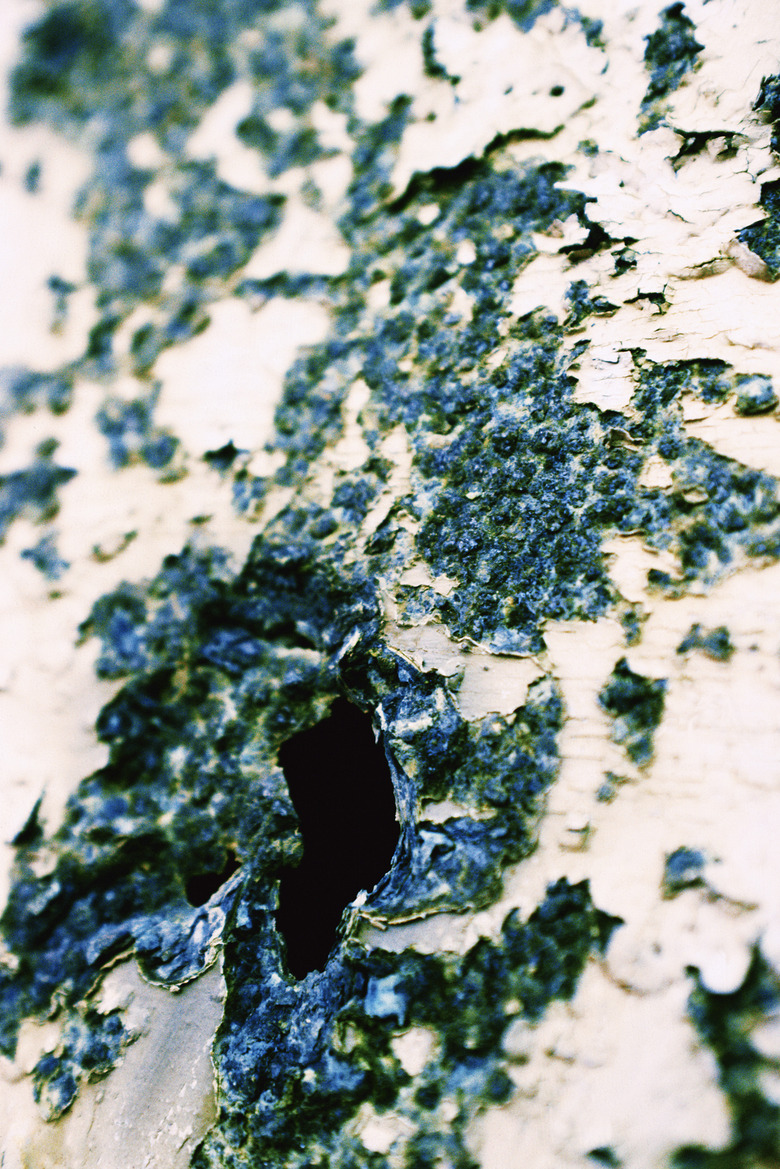How To Disinfect Concrete
Concrete is a commonly used building material, combining cement, sand, gravel and water. Because it is a porous material, it can be contaminated by mold, pet urine and other unsafe things. In these cases it is important to disinfect the concrete surface for the health of your family. Disinfecting concrete is not a difficult task and should be undertaken at the first sign of dangerous contaminants.
Step 1
Sweep the concrete to remove all dirt, dust and other debris.
Step 2
Open all windows and doors to ensure the best possible ventilation.
Step 3
Wash the concrete if needed with soapy water and a soft scrub brush.
- Concrete is a commonly used building material, combining cement, sand, gravel and water.
- Disinfecting concrete is not a difficult task and should be undertaken at the first sign of dangerous contaminants.
Step 4
Pour 1 to 2 cups of bleach into 1 gallon of distilled water.
Step 5
Cover the concrete in the solution, reapplying as needed on vertical surfaces such as walls. The concrete must remain wet for at least 15 minutes to allow the solution to penetrate and disinfect.
Step 6
Rinse the concrete with clean water.
Step 7
Soak up the excess water with towels and rags if there is no drainage.
Step 8
Dry the concrete as quickly as possible with fans and portable dehumidifiers. This will help to prevent mold growth.
- Pour 1 to 2 cups of bleach into 1 gallon of distilled water.
- Soak up the excess water with towels and rags if there is no drainage.
Lay Concrete
Laying concrete is one of the simplest things you can do to spruce up your curb appeal or backyard. Once you've read up on how to lay concrete, it's a relatively easy project that can be done in an afternoon. Determine the slope of the yard and adjust the perimeter of the slab accordingly. Use a level to ensure boards are straight. For example, if you were laying a 12-by-16-foot concrete patio off of a back door, your form would consist of two 12-foot 2-by-4s and one 16-foot 2-by-4. The amount needed depends on the size and scope of your project. This step also helps support the concrete and prevent it from cracking, especially if you're layering on top of existing concrete. You'll probably need a wheelbarrow or other large trough for this. Before pouring the concrete, wet the ground thoroughly with a garden hose, especially if you're working with bare dirt beneath your rebar or crushed stone layer. This prevents the ground from absorbing all of the concrete's moisture, which encourages the slab to dry evenly. If you're expecting inclement weather before the concrete has properly dried, cover it with a tarp to protect it.
- Laying concrete is one of the simplest things you can do to spruce up your curb appeal or backyard.
- Before pouring the concrete, wet the ground thoroughly with a garden hose, especially if you're working with bare dirt beneath your rebar or crushed stone layer.
Things Needed
- Broom
- Soap
- Water
- Brush
- Bleach
- Towels
- Fans and dehumidifiers
- Rubber gloves
Warning
Wear heavy rubber gloves when handling bleach.
References
- North Dakota State University: "Remove Mold for a Healthy Home"; Kenneth Hellevang, Ph.D.
- Concrete Network: Concrete Floor Maintenance
- "How to Fix Just About Everything"; Bill Marken; 2002
- Odell Complete Concrete: How to Pour a Concrete Slab
- DIY Network: How to Lay a Concrete Pad
- April Wilkerson: Pouring a Concrete Slab
